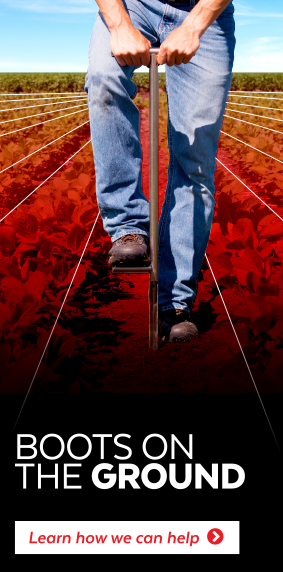As spring temperatures begin to rise, many growers are anxious to start planting. While planting early may have some benefits, it is important to be cautious and not plant too soon. It is best to plant based on soil temperature and field conditions in your area, rather than the calendar date.
What should you consider before planting?
Temperature
As the days become longer, the soil begins to warm up. A minimum soil temperature of 50⁰ F for corn, and 55 to 60⁰ F for soybeans is recommended. Planting in soil that is too cold (or too wet) can lead to a multitude of problems, including:
- Prolonged exposure to disease and pests
- Corkscrewed or twisted seedlings
- Uneven emergence
- Poor stand
One of the most vulnerable times for a corn plant is before emergence and in the early V stages. The benefit for planting early may be compromised if it means the seed will just sit in the ground and be exposed to disease and pests longer than necessary.
Moisture Levels
In addition to soil temperatures, sufficient moisture levels must also be considered before planting. A corn seed must imbibe 30% of its weight in water before germination will occur. If the soil around the planted seed is too dry (or dries out too quickly) germination will be delayed until satisfactory moisture levels are available.
Conversely, planting when the soil is too wet it can create a compacted layer to form around the seed, which in turn can restrict root development and fertility uptake as the plant matures. Also, heavily saturated ground may cause the seed trench to remain open. The result of this is poor seed-to-soil contact, which will negatively impact emergence.
Fertilizer Plan
To mitigate some of the risk, consider applying a starter fertilizer to foster crop growth early in the growing season. Starter fertilizers place a readily available supply of plant nutrients in a position where they are easily accessible to the limited root system of seedling. This is especially true in cooler climates and in no-till operations.
Choosing the optimum time to plant is often the most important part of planting. It is best to make planting decisions based on field-ready conditions, as opposed to what the calendar says. Additionally, tillage practices, soil types, seeding depth, and weather conditions can greatly affect the seed’s ability to germinate.
